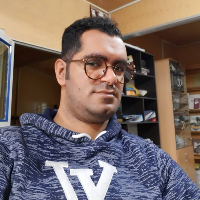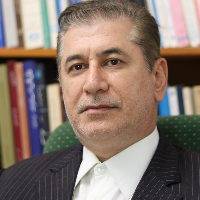Socio-economic Complexities in Central Plateaue of Iran during 5th Millennium B.C. on the Basis of Pottery Technology
Author(s):
Article Type:
Research/Original Article (دارای رتبه معتبر)
Abstract:
The expansion of socio-economic complexities in Central Plateaue of Iran (CPI) occurred during the transitional and early chalcolithic Periods (5th millennium BCE). Methodology of the present research based on the analysis of pottery data and some other backup and complementary evidences of the 5th millenniume BCE which have been discovered in Qazvin and Tehran Plains’ archaeological surveys, newly added sites’ excavations such as Chahar Boneh and Ebrahim Abad, reexcavations of some prehistoric sites such as Zaghe, Qabrestan and Sialk, and finally, laboratories researches and chronological studies in CPI region. Pottery production which was commonplace in the form of household in the half of the 6th millennium BCE in CPI’s societies, gradually, was specialized due to improving of the pottery production and painting from Sialk I1-3 to Sialk I4-5. The important changes that occurred in this period are included: the increasing of prehistoric sites in Tehran Plain; the producing of counting objects in Zagheh; putting gifts made of non-native raw materials in the graves of Zagheh; the appearance of elegant and red pottery of Cheshmeh Ali in the area of CPI; and production and baking of pottery in advanced furnaces in Tepe Pardis. Most of mentioned evidences certificates on the prevalence of workshop production activities in this period. Some important developments, such as advances in architecture, metalworking and pottery, took place from the early Chalcolithic (Sialk III1-3) to the late Chalcolithic (III6-7b). Also, the evidences of copper ore melting were obtained in Qabrestan and Sialk in this period. The existence of planning and organization in the societies of the 5th millennium BCE in CPI is proven by the use of potter's wheel, the exploitation of advanced pottery furnaces, the decoration of interior and exterior surfaces of potteries with geometric, plant, animal, human and narrative designs, and using characteristics such as proportionality, symmetry, composition and framing are the reasons of the specialized production.
Keywords:
Language:
Persian
Published:
Iranian Archaeological Research Journal, Volume:9 Issue: 20, 2019
Pages:
21 to 36
magiran.com/p1984166
دانلود و مطالعه متن این مقاله با یکی از روشهای زیر امکان پذیر است:
اشتراک شخصی
با عضویت و پرداخت آنلاین حق اشتراک یکساله به مبلغ 1,390,000ريال میتوانید 70 عنوان مطلب دانلود کنید!
اشتراک سازمانی
به کتابخانه دانشگاه یا محل کار خود پیشنهاد کنید تا اشتراک سازمانی این پایگاه را برای دسترسی نامحدود همه کاربران به متن مطالب تهیه نمایند!
توجه!
- حق عضویت دریافتی صرف حمایت از نشریات عضو و نگهداری، تکمیل و توسعه مگیران میشود.
- پرداخت حق اشتراک و دانلود مقالات اجازه بازنشر آن در سایر رسانههای چاپی و دیجیتال را به کاربر نمیدهد.
دسترسی سراسری کاربران دانشگاه پیام نور!
اعضای هیئت علمی و دانشجویان دانشگاه پیام نور در سراسر کشور، در صورت ثبت نام با ایمیل دانشگاهی، تا پایان فروردین ماه 1403 به مقالات سایت دسترسی خواهند داشت!
In order to view content subscription is required
Personal subscription
Subscribe magiran.com for 70 € euros via PayPal and download 70 articles during a year.
Organization subscription
Please contact us to subscribe your university or library for unlimited access!




